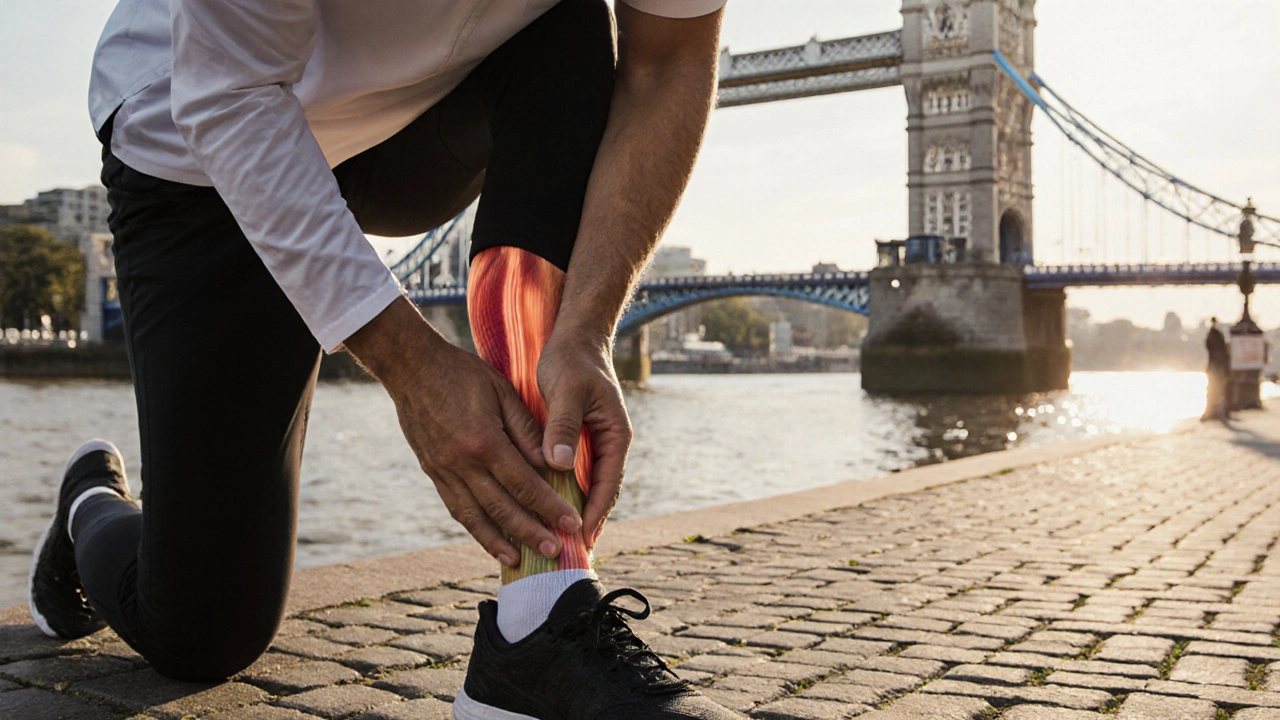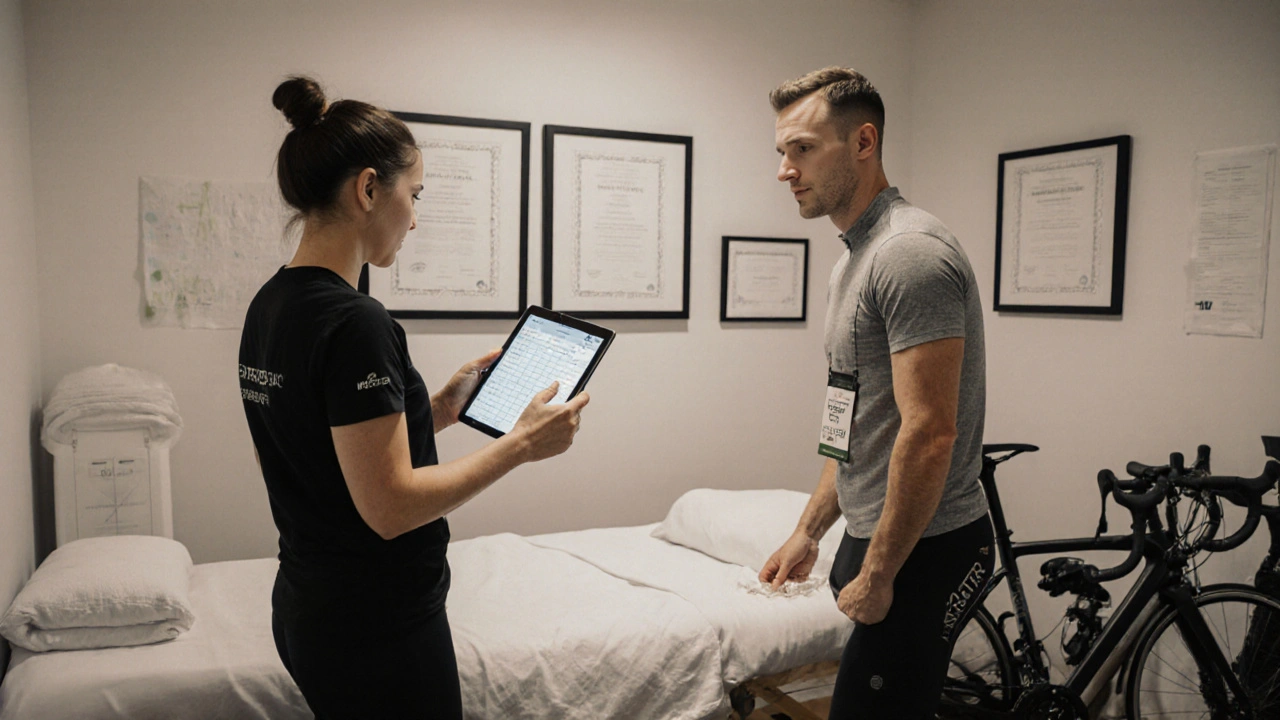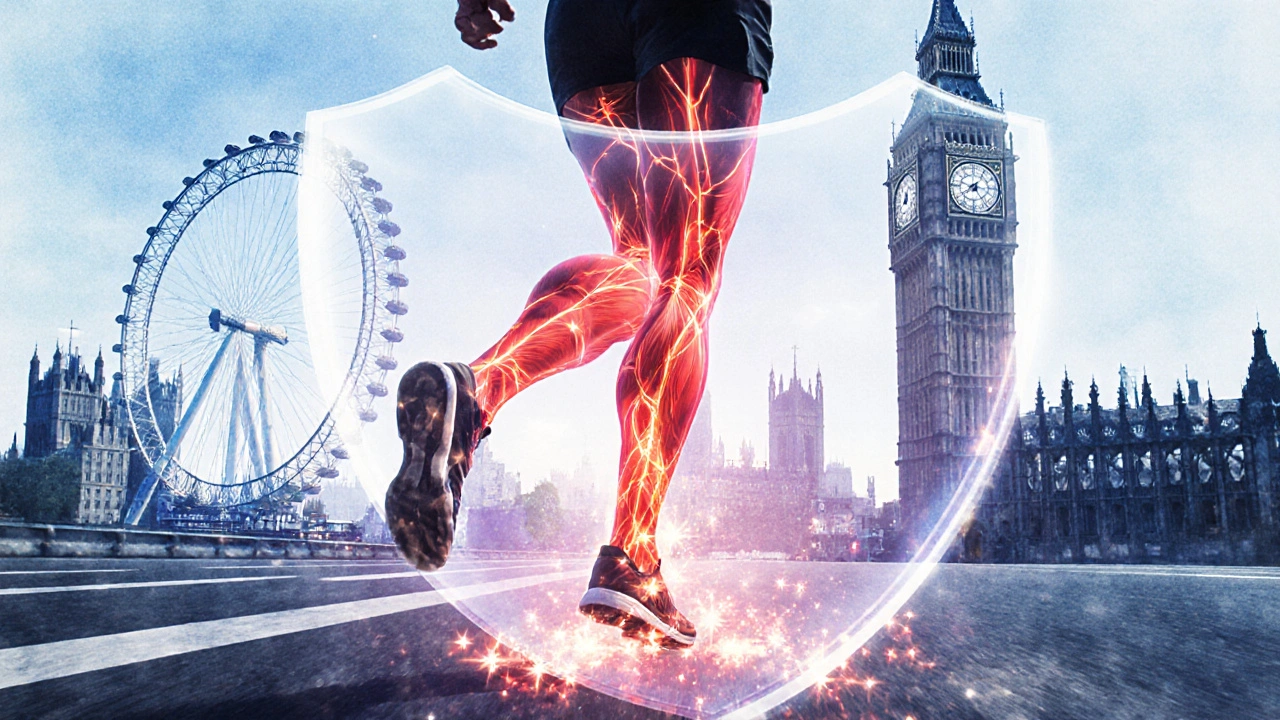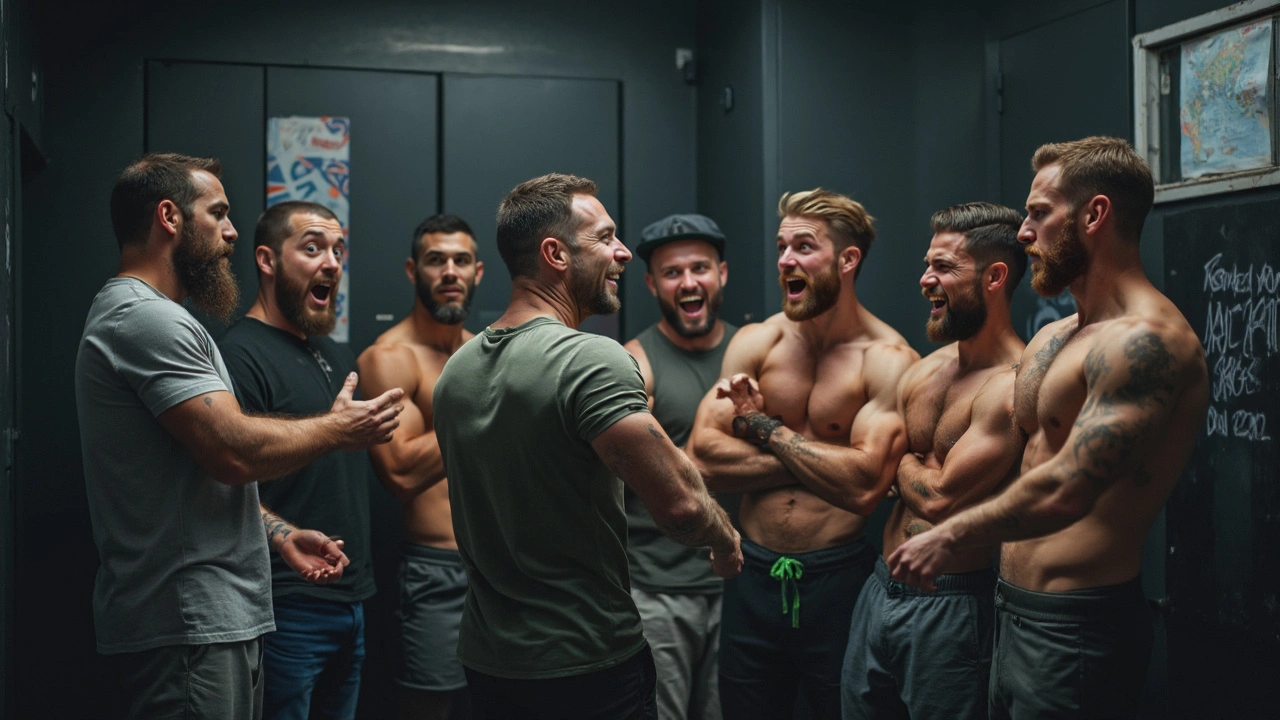Sports Massage in London: Essential Guide for Injury Prevention

Ever wonder why elite athletes swear by a good rub-down after a grueling session? The secret sauce is sports massage London - a targeted therapy that keeps muscles supple, joints happy, and injuries at bay. If you’re a runner, cyclist, or weekend warrior living in the capital, this guide will show you exactly what sports massage is, why it matters, how to lock in a session, and what to expect once you’re on the table.
Key Takeaways
- Sports massage is a performance‑focused technique that reduces muscle tension and speeds up recovery.
- Regular sessions can cut the risk of common injuries by up to 35% according to recent UK sports medicine data.
- London providers typically charge £45‑£95 for a 45‑minute treatment; premium therapists demand £120+ for a 90‑minute deep‑tissue session.
- Look for qualified practitioners with Level3 Sports Massage, UK Sports Therapy registration, and experience with your sport.
- Expect a brief intake, targeted strokes, and post‑session advice on stretches and hydration.
What Exactly Is Sports Massage?
Sports Massage is a specialized form of manual therapy that blends deep‑tissue work, stretch‑assisted techniques, and trigger‑point release to prepare the body for activity, aid recovery, and prevent injury. Unlike a classic Swedish rub‑down, it zeroes in on the muscles you use most in your sport. Think of it as a tune‑up for your locomotor system - tightening loose bolts, greasing squeaky joints, and checking the alignment before you hit the track.
Why It’s a Game‑Changer for Injury Prevention
Research from the British Journal of Sports Medicine (2023) shows athletes who receive regular sports massage experience 30‑40% fewer strains and sprains. The mechanisms are simple:
- Improved blood flow: rhythmic strokes boost circulation, delivering oxygen and nutrients to fatigued fibers.
- Reduced muscle adhesions: breaking up scar‑like tissue restores range of motion.
- Neuromuscular re‑education: targeted pressure resets firing patterns that can cause over‑use injuries.
- Stress relief: lowered cortisol helps the body stay in a balanced, recovery‑ready state.
All of these add up to a body that moves more efficiently and is less likely to crack under pressure.

How to Find a Reliable Sports Massage in London
London’s wellness scene is massive, so narrowing it down takes a bit of legwork. Here’s a step‑by‑step cheat sheet:
- Search for "sports massage London" on specialist directories like TherapistFinder UK or Sports Therapy Register.
- Filter by Qualification: Level3 Sports Massage, UK Sports Therapy registration, or a diplomas from the London School of Massage.
- Check reviews on Google and Trustpilot - focus on comments about punctuality, hygiene, and sport‑specific knowledge.
- Shortlist 3‑4 clinics, then call to ask about therapist experience with your sport (e.g., rowing, trail running).
- Book a trial 45‑minute session to test the water before committing to a regular package.
Most reputable studios are located in fitness‑focused neighbourhoods - Shoreditch, Camden, and Clapham have clusters of sports‑therapy hubs.
Choosing the Right Massage Therapist
Not every hands‑on practitioner is created equal. Keep an eye out for these credentials:
- Level3 Sports Massage Certification - the baseline in the UK.
- UK Sports Therapy Register (UKSTR) membership - ensures ongoing CPD and insurance.
- Specialised training in your discipline (e.g., “Running‑Specific Massage” or “Cyclist‑Focused Stretching”).
- Client testimonials that mention reduced downtime or specific injury recovery.
When you speak to a therapist, ask about their experience with your sport and whether they perform a brief movement assessment before the massage. A good professional will tailor the session to your training calendar, not just follow a one‑size‑fits‑all script.
Typical Session Details: Time, Price, and What to Expect
A standard sports‑massage appointment in London runs anywhere from 45 to 90 minutes. Here’s a quick rundown of what you’ll pay and what you’ll get:
- 45‑minute session: £45‑£65 - ideal for a quick post‑run recovery.
- 60‑minute session: £65‑£85 - covers a more thorough muscle‑group focus.
- 90‑minute deep‑tissue session: £95‑£130 - best for chronic tightness or pre‑event preparation.
Most clinics require a 24‑hour cancellation notice; otherwise you’ll be charged 50% of the session fee. First‑time clients often get a 10% discount on the initial booking.
What actually happens in the room?
- Intake (5‑10min): Therapist asks about recent workouts, injuries, and goals.
- Assessment (5min): Light movement tests to pinpoint tight spots.
- Massage (30‑70min): Combination of effleurage (long strokes), petrissage (kneading), and friction on trigger points.
- Wrap‑up (5‑10min): Advice on stretches, foam‑roller work, and hydration.
Expect to be unclothed only to the level you’re comfortable with - most therapists work with you in sportswear or a towel. Cleanliness is non‑negotiable: fresh linens, sanitized tables, and hand‑washing protocols are standard across reputable London studios.

Price Comparison: What London Studios Offer
| Provider | Location | Qualification | 45‑min (£) | 60‑min (£) | 90‑min (£) |
|---|---|---|---|---|---|
| FitPulse Therapy | Shoreditch | Level3 + UKSTR | 48 | 72 | 115 |
| London Sports Rehab | Clapham | Level3 + MSc Sports Science | 55 | 80 | 120 |
| BodyLab Wellness | Camden | Level3 + 5yr experience | 45 | 68 | 98 |
| Elite Performance Centre | Westminster | Level3 + Olympic athlete background | 60 | 85 | 135 |
These numbers are averages collected from public price lists in Q22025. Prices can shift with demand, especially around major sporting events like the London Marathon.
Pro Tips & Common Mistakes - A Quick Checklist
- Don’t wait until you’re sore. Schedule a session 2‑3days before a big race to prime muscles.
- Communicate openly. Mention any lingering pain; therapists can adjust pressure on the spot.
- Avoid heavy alcohol before a massage - it dulls circulation and reduces effectiveness.
- Hydrate post‑session. Drink 500ml of water within an hour to flush out metabolic waste.
- Combine with active recovery. Light cycling or swimming the day after amplifies the benefits.
Frequently Asked Questions
What is the difference between sports massage and a regular Swedish massage?
A Swedish massage focuses on relaxation using long, gentle strokes. Sports massage is more targeted, using deeper pressure, stretch‑assisted techniques, and sport‑specific assessment to improve performance and prevent injuries.
How often should I get a sports massage?
For most active adults, a 45‑minute session every 2‑3weeks is sufficient. Competitive athletes often schedule weekly or bi‑weekly sessions, especially during heavy training blocks.
Will I be naked during the treatment?
No. You can stay fully clothed in sportswear or be draped with a towel. Therapists only uncover the area they’re working on, maintaining privacy and comfort.
Can sports massage help with chronic lower‑back pain?
Yes. By addressing muscular imbalances and releasing trigger points in the hips, glutes, and lumbar fascia, regular sports massage can significantly reduce chronic back discomfort.
What should I bring to my first appointment?
Wear comfortable sports clothing, bring any recent training logs or injury notes, and have a water bottle handy for post‑massage hydration.
Armed with the right knowledge, you can turn a simple rub‑down into a strategic tool that keeps you on the move, injury‑free, and ready for whatever challenge London’s streets throw at you.






